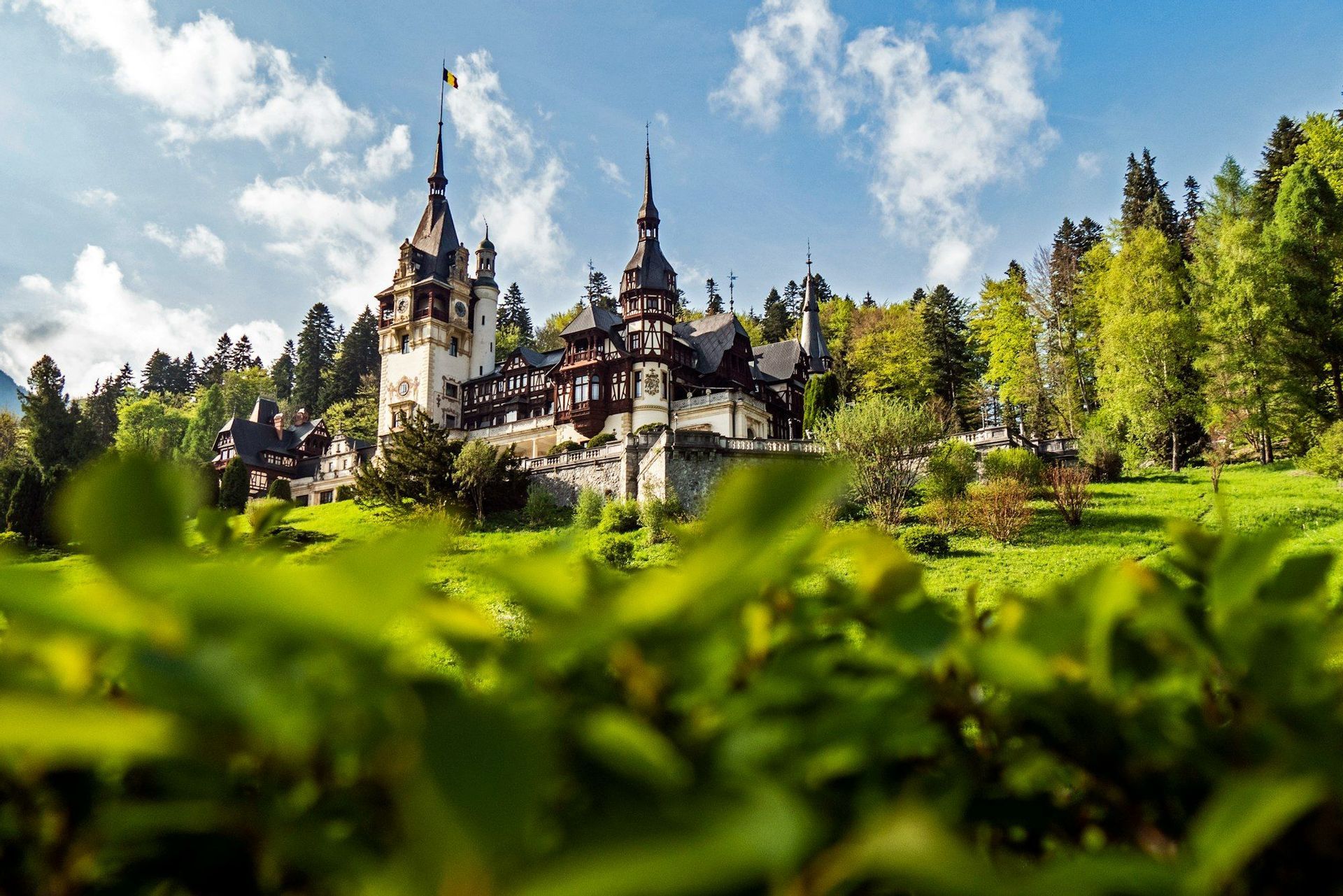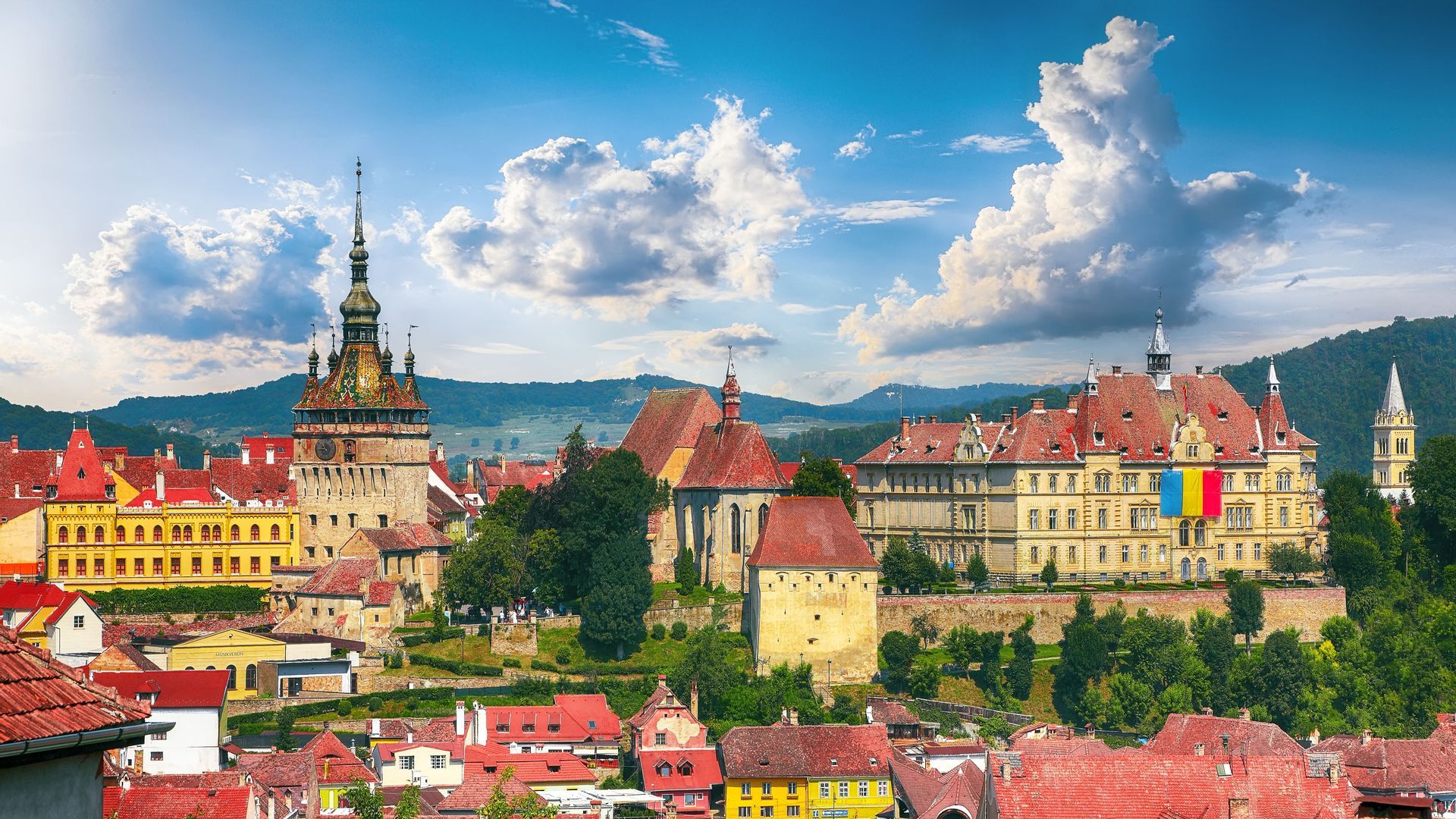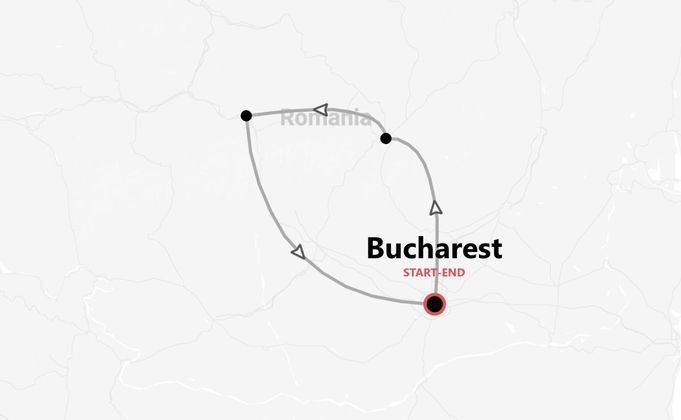
Group trips to Romania
Our organized trips to Romania
Discover Romania, a vibrant mosaic where ancient traditions gracefully intertwine with breathtaking natural wonders, often surprising even the most seasoned traveler. It is a land of unforgettable enchantment and profound heritage, where untamed wilderness meets living history. From the majestic Carpathian Mountains, inviting adventurers to explore pristine forests and dramatic peaks, to the UNESCO-listed medieval citadel of Sighisoara, a pastel-hued jewel bustling with timeless charm, Romania offers a captivating journey. With its warm hospitality, exquisite local cuisine, and vibrant cultural scene that thrives in cities like Sibiu, Romania welcomes curious explorers and seekers of authentic experiences, ready to be enchanted by its manifold splendors.
5 days • 4 nights
FAQs about Romania
If you are a UK citizen, to find out the entry requirements for Romania, you can check this informational page from our partner Sherpa. If you need a visa, you can apply for it through Sherpa. If you are not a UK citizen, you can still use Sherpa by changing the nationality in the 'Passport' section.
Before traveling, always remember to check the government website of your country of origin for updates on the entry requirements for Romania – you wouldn’t want to stay home due to a bureaucratic detail!
- UK residents: review the FCDO Travel Advice.
- US residents: consult the US Department of State Travel Advice.
- Other residents: refer to your government or local consulate's travel advice.
Romania is in the Eastern European Time Zone (EET), which is 2 hours ahead of Coordinated Universal Time (UTC+2). During daylight saving time, typically from the last Sunday in March to the last Sunday in October, it's Eastern European Summer Time (EEST), which is UTC+3. If it's 12pm in the UK, it will be 2pm in Romania. If it's 12pm in New York, USA, it will be 7pm in Romania during standard time and 8pm during daylight saving time.
The currency used in Romania is the Romanian Leu (RON). The exchange rate can vary, but as a rough guide:
- 1 GBP is about 5.7 RON
- 1 USD is about 4.8 RON
- 1 EUR is about 4.9 RON
You can exchange your money at banks, currency exchange offices, and some hotels. It's a good idea to compare rates for the best deal.
In Romania, you can use credit cards, debit cards, and cash for payments. Credit and debit cards are widely accepted in most urban areas, especially in places like hotels, restaurants, and shops. However, it's a good idea to carry some cash with you, particularly if you're visiting rural areas or smaller towns where card acceptance might be limited. ATMs are available in cities and towns for withdrawing Romanian Leu. Make sure to inform your bank before traveling to avoid any issues with your cards abroad.
In Romania, tipping is appreciated but not compulsory. Tipping around 10 to 15 percent in restaurants is common if you’re happy with the service. In cafes and bars, rounding up the bill or leaving some change is a nice gesture. For taxi drivers, rounding up to the nearest whole amount is often practiced. Hotel staff and tour guides also appreciate tips for good service. Always check the bill to see if a service charge is included before tipping.
Romania offers fast and reliable internet services. Wi-Fi is widely available in urban areas, especially in hotels, cafes, and restaurants. If you're traveling from Europe or the Schengen area, you can use roaming services without extra charges. However, if you're coming from outside Europe or need more data, buying a local SIM or an e-SIM data plan is a good idea. Local providers like Orange, Vodafone, and Digi have competitive plans that cover most of the country.
In Romania, the official language is Romanian. It's a Romance language, so if you know a bit of Italian, Spanish, or French, you might catch some similarities. Here are a few useful phrases you might hear or use:
- Hello: Salut
- Thank you: Mulțumesc
- Yes: Da
- No: Nu
- Please: Te rog
- Goodbye: La revedere
Knowing a few words can make your travel experience even richer!
Romania uses Type C and Type F plugs, similar to most of Europe. The standard voltage is 230V with a frequency of 50Hz. If you are coming from the UK, USA, or other countries with different plug types, we suggest you bring a universal adapter to charge your devices.
The main religion in Romania is Christianity, with the majority of Romanians practicing Eastern Orthodox Christianity. Important religious holidays include Easter, which is celebrated with great enthusiasm, and Christmas. Orthodox Easter does not always align with Western Easter, as it's based on the Julian calendar. If you're visiting during these times, you might experience unique traditions and festivities.
When packing for Romania, it's helpful to consider the time of year you'll be visiting, as the climate can vary. Here's a general guide to help you prepare your backpack:
1. Clothing:
- Lightweight clothing for summer
- Warm layers for winter
- Waterproof jacket
- Scarf and gloves for colder months
2. Shoes:
- Comfortable walking shoes
- Hiking boots if you plan to explore the Carpathians
- Sandals for summer
3. Accessories and Technology:
- Universal adapter
- Portable charger
- Camera or smartphone
- Headphones
4. Toiletries and Medication:
- Travel-sized toiletries
- Sunscreen
- Insect repellent
- Basic first-aid kit
- Common travel medication like pain relievers and motion sickness tablets
Packing wisely ensures you're prepared for all the adventures Romania has to offer!
Romania's weather varies by region and season, so here’s a quick overview:
- Bucharest and Southern Romania: Summers are hot, reaching up to 35°C in July and August, while winters can be cold, with temperatures dropping to around -5°C. Spring and autumn are mild and pleasant.
- Transylvania and Central Romania: Cooler summers with temperatures around 25°C, and winters can be harsh with snow and temperatures below -10°C.
- Northern and Eastern Romania: Summers are warm, while winters are cold, often snowy, with temperatures around -5°C.
- Black Sea Coast: Summers are warm and humid, perfect for beachgoers, while winters are milder compared to inland areas.
The best time to visit is from May to September, when the weather is generally warm and pleasant across the country.

